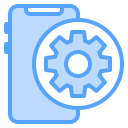
Cross-Platform Mobile Development: Pros and Cons — A Practical, Real-World Guide
Chosen theme: Cross-Platform Mobile Development: Pros and Cons. Discover the real trade-offs, practical strategies, and honest stories that help you decide when cross-platform is a smart bet—and when native still wins. Share your questions and subscribe for more hands-on insights.
What Cross-Platform Really Means Today
The promise is simple: write once, ship everywhere. In practice, you share most business logic, while edges like navigation, animations, and platform permissions often need tailored handling. That balance defines the true pros and cons your team will experience.
Flutter, React Native, .NET MAUI, and Kotlin Multiplatform offer different routes to similar goals. Each framework trades developer ergonomics, performance, ecosystem maturity, and native fidelity differently—making the pros and cons depend heavily on your app’s priorities.
Usually it’s speed, cost, and staffing. A single codebase means fewer moving parts, quicker iteration, and shared expertise. However, the simplicity can fade when platform quirks surface, turning a neat pro into a nuanced trade-off you must manage carefully.
Faster Time to Market
Shipping an MVP across iOS and Android simultaneously compresses timelines dramatically. Marketing launches become cleaner, feedback loops accelerate, and A/B testing becomes unified. For early-stage products, that speed magnifies learnings and reduces the cost of discovering product-market fit.
Lower Initial Costs
A single codebase reduces duplicated effort across platforms, often translating into fewer developers, simpler coordination, and cheaper maintenance—especially in the first year. The savings are real, though they can shrink if advanced native requirements emerge later.
Unified Team Workflow
Shared patterns, a common component library, and a single CI/CD pipeline tighten the feedback loop between design, development, and QA. Teams celebrate the clarity: one backlog, one release cadence, one set of metrics—all palpable advantages when moving quickly.
The Cons That Often Surprise Teams
Heavy animations, complex list virtualization, or low-latency multimedia can expose differences between platforms. Bridging native modules may add overhead, and micro-stutters can erode perceived quality. These issues shift the balance of pros and cons for premium experiences.

Stories from the Trenches
A Startup’s 90-Day Launch with Flutter
A small team shipped iOS and Android simultaneously in three months, hitting feature parity quickly. Their shared widgets and hot reload kept iteration rapid. They later invested in selective native modules for camera and biometrics, preserving speed without sacrificing essentials.
An Enterprise’s Hybrid Strategy Backfires
A legacy enterprise app mixed cross-platform UI with deeply custom native SDKs. Release velocity slowed as teams juggled changes in two ecosystems. The lesson: cross-platform works best when architectural boundaries are well-defined, not when trying to wrap everything in one layer.
An Indie Dev Balances Features and Performance
A solo developer embraced React Native for rapid experimentation, releasing new features weekly. When a complex animation stuttered on older Android devices, they implemented a native module just for that screen—an elegant compromise that preserved velocity and user delight.




Tech Stack Choices Through a Pros/Cons Lens
Flutter’s rendering engine delivers consistent UI and smooth animations; React Native integrates naturally with web-savvy teams and JS ecosystems. Choose Flutter for visual control and consistency; choose React Native if you value web-aligned skills and mature community plugins.
Tech Stack Choices Through a Pros/Cons Lens
Kotlin Multiplatform excels at sharing business logic while keeping native UI, ideal for performance-critical apps. .NET MAUI appeals to C# teams wanting unified tooling. Both reduce duplication, but demand strong native literacy to fully capitalize on their strengths.
Upgrades and Dependency Drift
Framework updates ripple through plugins and native modules. Build a cadence for dependency hygiene and pre-production testing. Regular maintenance keeps the pros—speed and cohesion—intact while minimizing the risk that upgrades snowball into emergency refactors later.
CI/CD Through a Single Pipeline
A unified pipeline is a genuine advantage: one set of build scripts, test suites, and release gates. Add platform-specific lanes for entitlements and store assets. This preserves cross-platform efficiency without masking the realities of iOS and Android distribution.
Team Skills and Knowledge Sharing
Cross-platform thrives when teams understand both the framework and native platforms. Encourage brown-bag talks, pair debugging, and shared runbooks. Resilience grows as knowledge spreads, reducing the pain of complex bugs that might otherwise negate initial time savings.
A Decision Checklist You Can Use Today
Product Risk, Scope, and Timeline
If you must validate quickly across both platforms, cross-platform is compelling. Define critical KPIs and release milestones, then check whether potential native complexity threatens timelines. When speed-to-learning rules, shared code often gives you the edge you need.
Performance-Critical or Hardware-Heavy Features
If your roadmap includes heavy graphics, complex gestures, or low-latency media, prototype early on target devices. Measure cold start, frame stability, and memory. If results disappoint, consider a hybrid approach that isolates the heaviest screens natively.
Ownership, Roadmap, and Community Health
Assess framework governance, plugin maintenance, and your team’s ability to own key modules. Strong ownership transforms potential drawbacks into manageable chores. If community momentum is waning, rethink the choice before lock-in turns an advantage into long-term friction.
